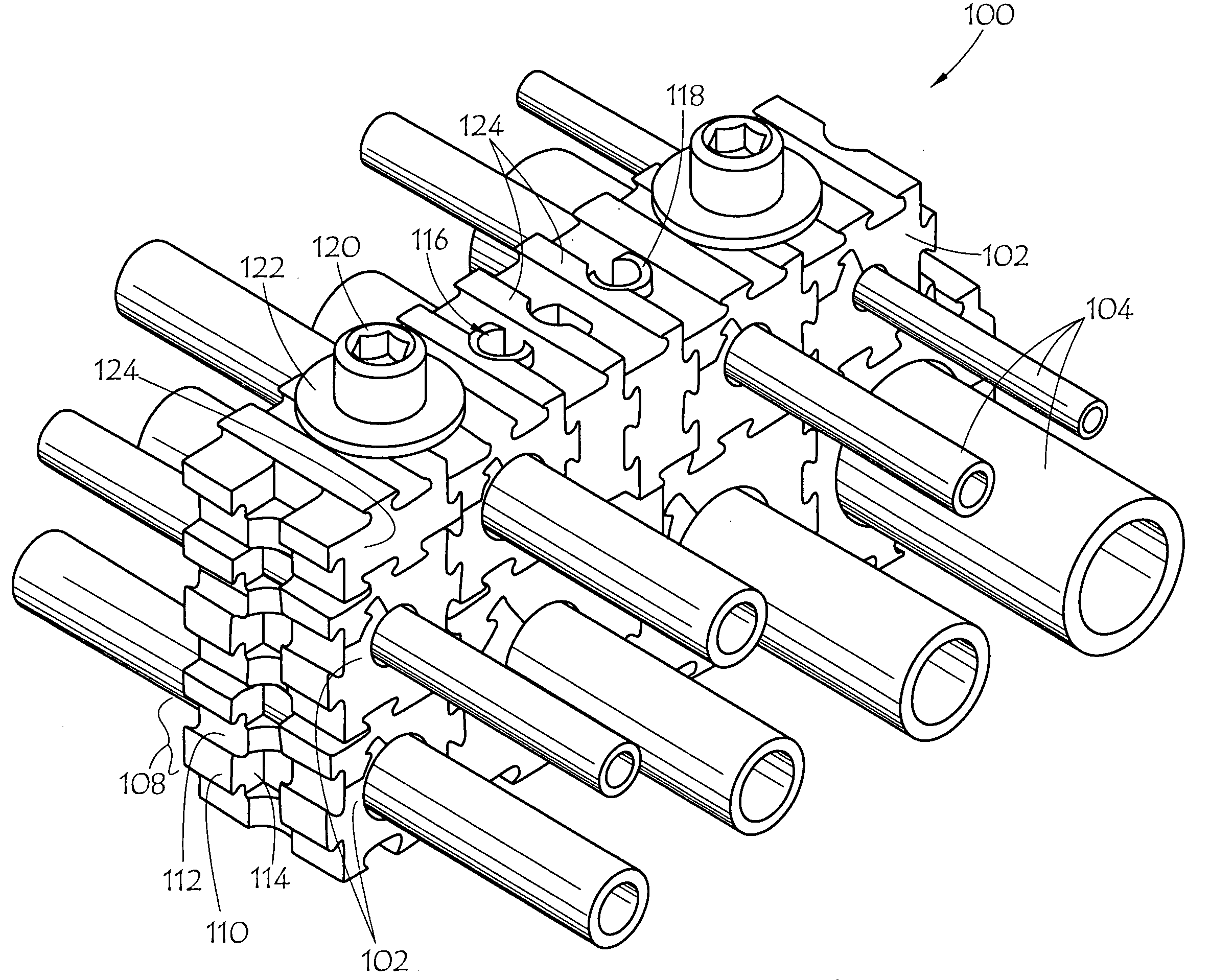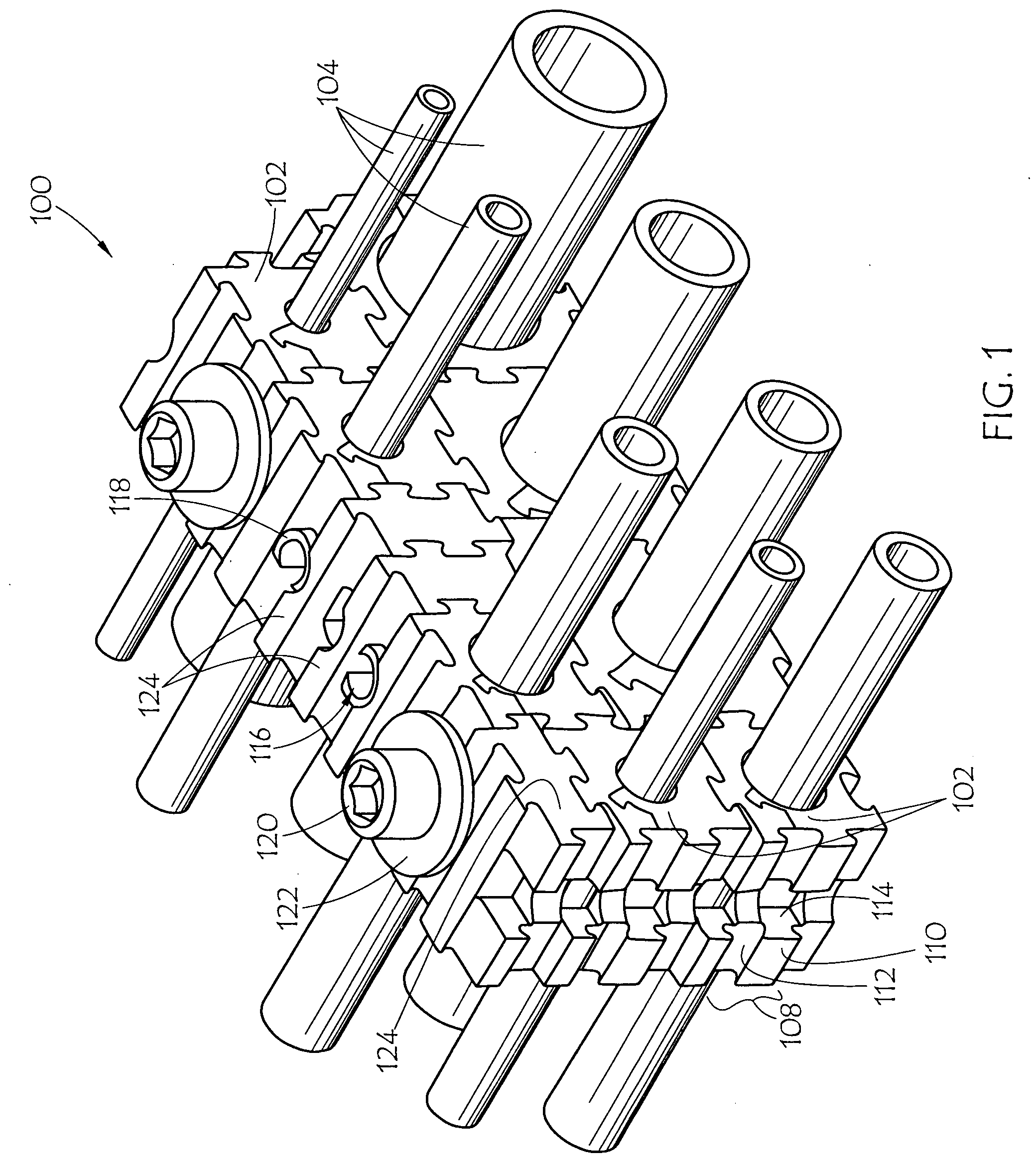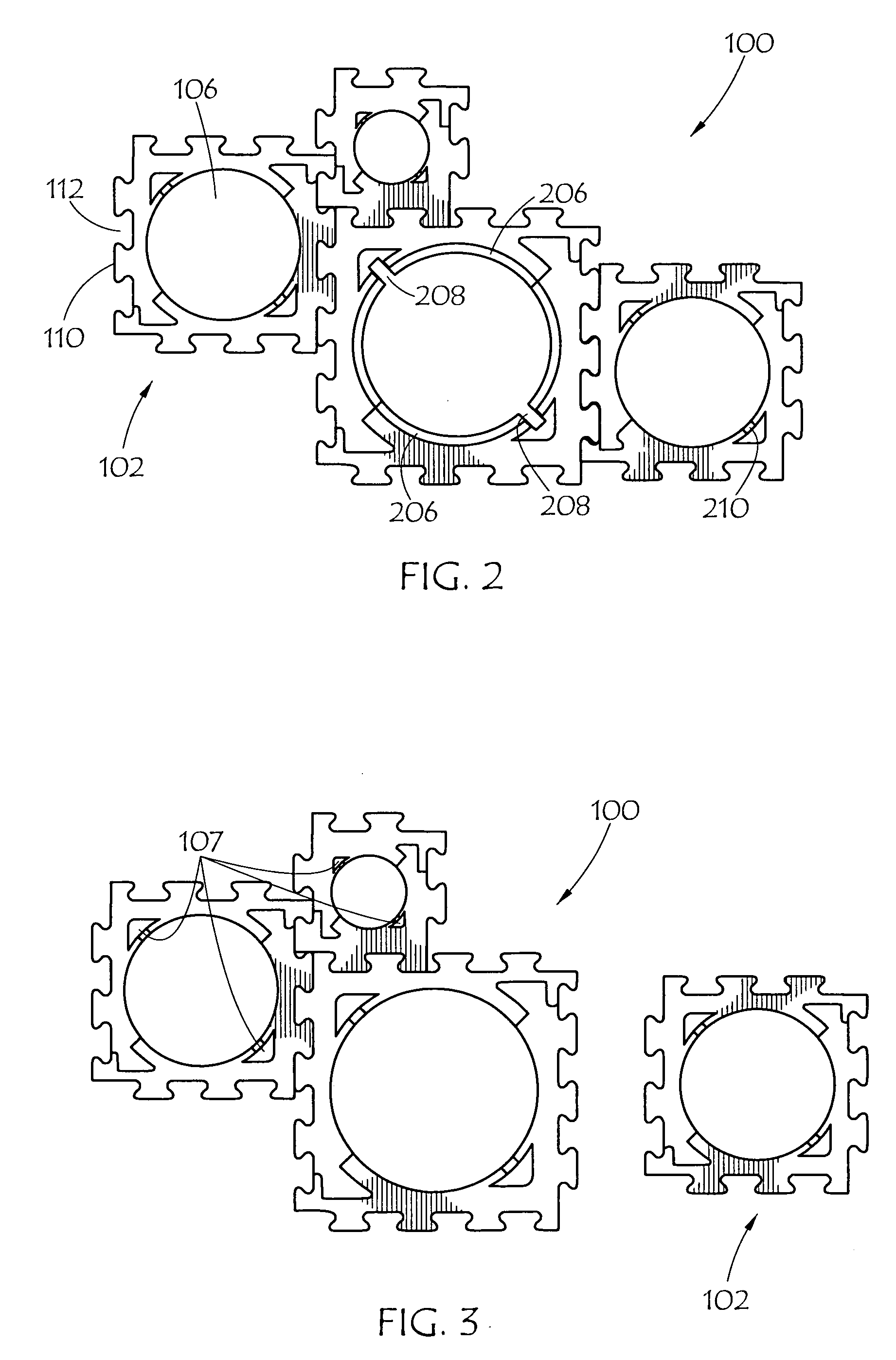[0008]The present invention is directed to systems and methods which provide secure, variable, modular support for multiple objects. An example of a
support system that exhibits superior organization of objects can be seen in embodiments of the present invention. The present modular support assembly comprises a
system of bracketry in the form of modules that can be put together in many configurations and used in a multitude of applications. In particular, the present modular support assemblies, methods and systems advantageously provide a flexibility to capture individual conduits and then lock multiple conduits together in various configurations, as needs may dictate. Although embodiments of the present modular support assembly can be used to support and transport many types of objects, particularly elongated objects, the modular support assembly is preferably used for the housing, transport, and support of elongated objects having a generally cylindrical cross-section, such as individual and bundled fluid conduits, including hydraulic hoses, tubes, and pipes. The use of a modular configuration results in reduced part count and cost via
standardization, and allows fluid conduits to be pre-bundled at the supplier level prior to equipment installation. The present modular support assembly may therefore be an attractive stock item for fluid conduit distributors.
[0009]While other modular shapes are contemplated, parallelepiped, rectangular, triangular, or other-shaped cross-sections, various embodiments of the present invention have modules of a generally block-type shape. The present modular support assembly comprises an assembly of these interchangeable modules. The modules can comprise a variety of sizes and can be placed around the fluid conduits either before or after the conduits have been bundled or placed. Each individual module comprises an aperture that receives one conduit. The ability to place the module around (or onto) the conduit before or after installation of the conduit is made possible by sliding the entire module over / onto the conduit or by providing modules that comprise two, preferably interchangeable module portions or halves, each portion comprising approximately one half of the module, wherein the portions are slidably removable from one another along a
longitudinal plane of the conduit retained therein. Other embodiments of the present invention may provide modules having two parts that differ vastly in size. Each module can be removed from the assembly in its entirety or in part. When one module portion is removed from the other module portion, a “pick and place” method of inserting the conduit into the module's aperture can be employed. This is a very beneficial feature of the design because it allows for conduit
accessibility and maneuverability in tight spaces. An important
advantage of the present embodiment is that a module can be moved to different parts of the assembly, including beside or underneath another module. The ability to move the modules from beside one another to below / above one another provides versatility in support. For example, a flipped module could act as a spacer during emergency repair. A further
advantage of each module receiving one conduit is that removal of one object can be achieved while maintaining the overall structure of a modular support assembly. The present invention provides a non-disruptive, easy to implement method of storing, transporting, and separating objects, including
hydraulic fluid conduits and becomes very beneficial when long lengths of pipe or tube are transported or installed together.
[0010]In various embodiments, the modules are cube-like in structure, having six sides. The dimensions and shape of the modules can vary depending upon the intended use of the assembly. For example, modules having a thickness that is greater than their width and height dimensions may be well suited for large
diameter, heavy conduits. In cube-like module embodiments, similarly and differently-sized modules are engaged with one another by a
system of slidable, inter-locking engagement portions, such as slide and groove fasteners or joints, disposed along the periphery of the modules. The slide and groove joints may include
interlocking fan-shaped tails and sockets as seen in sliding dovetail joints. Each block has, on at least four of its sides, including the top, bottom, left, and right sides, alternating tails and sockets. Thusly, depending on the number of tails and sockets per side, where there is a
tail on a left side of the module, at the same location on a module's opposing (right) side there will be a socket. Similarly, where there is a
tail on the bottom side of the module, at the same location on the module's opposing (top) side there will be a socket. The size, placement, and design of the engagement portions are preferably the same on each module, regardless of the size of the module itself. This similarity in the size of the
tail and socket facilitates engagement of any size of module with any other size of module. Because of this design of the module, large and small modules can be removed from the modular support assembly by removing module portions or whole modules at will. This allows for spontaneous creation of support along any portion of the fluid conduit, post-installation. An example of when this feature might be desirable is when a large outside
diameter (OD) conduit such as an oil pipe needs repair and this large OD pipe is bundled with other, possibly smaller fluid conduits.
 Login to View More
Login to View More  Login to View More
Login to View More 


